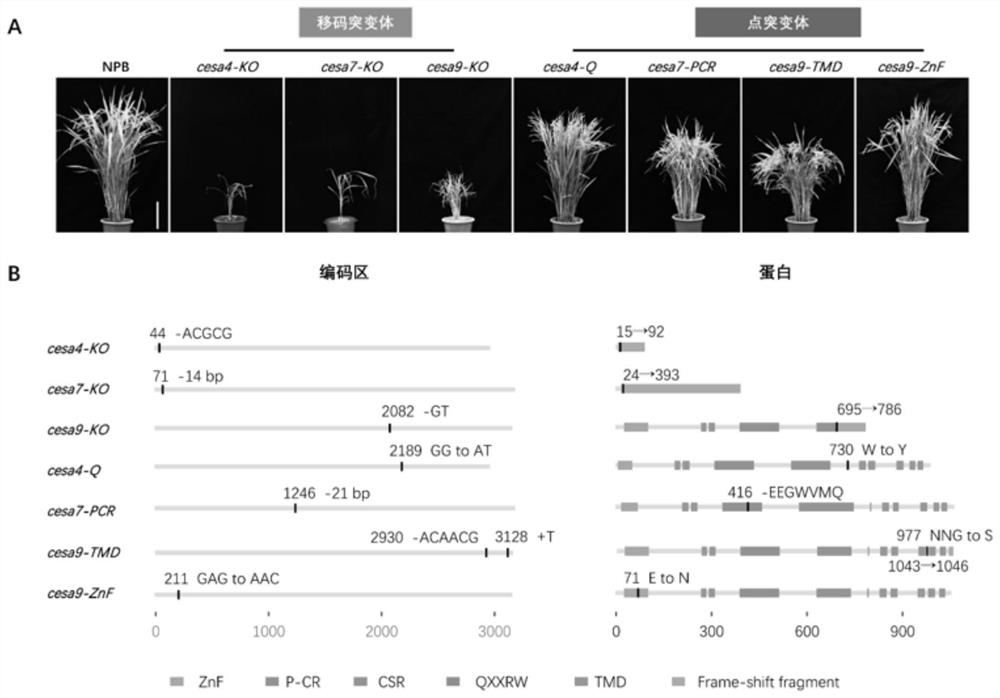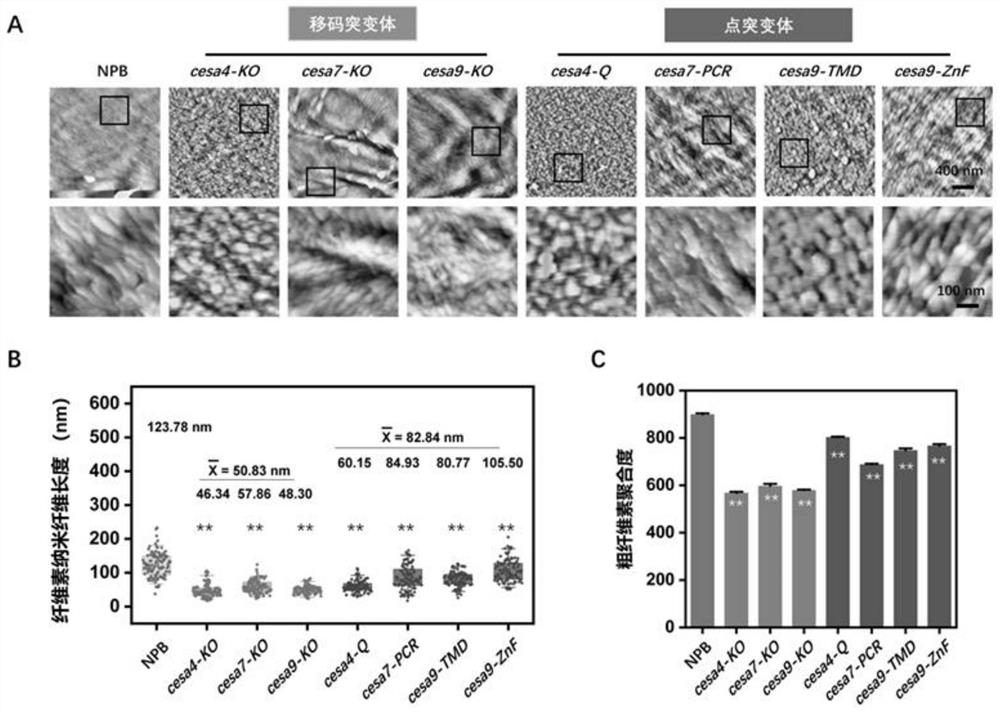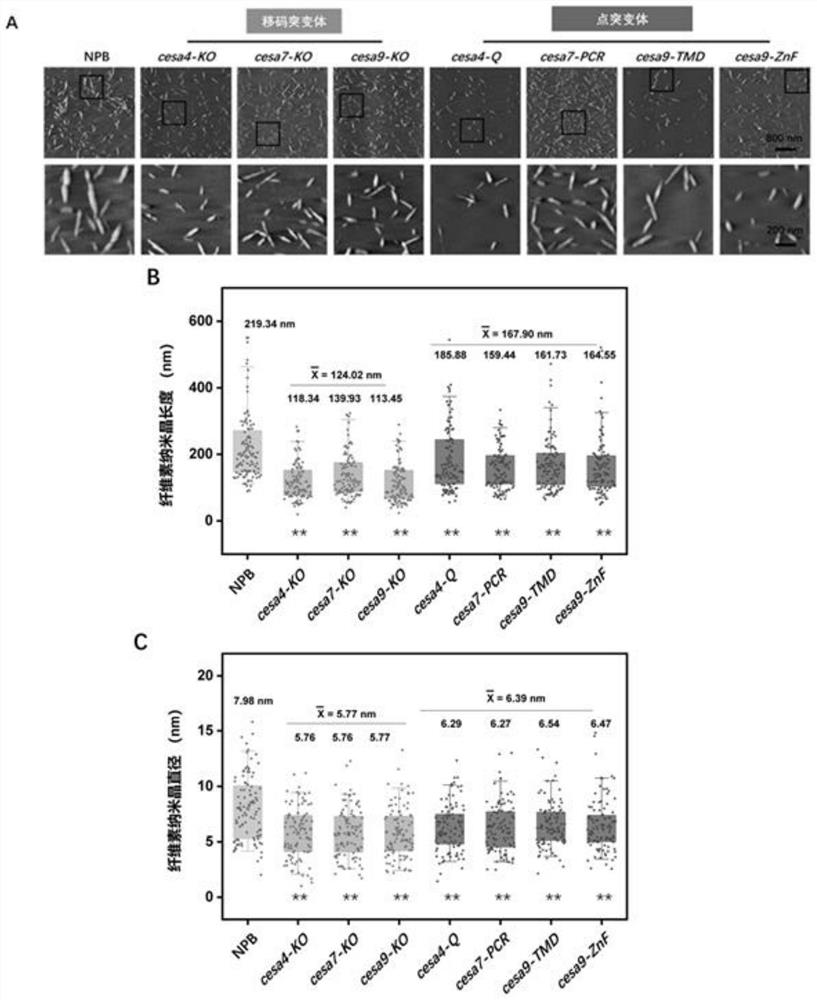Method for site-directed mutagenesis of plant cellulose synthase CESA and application of cesa mutant in preparation of nanocrystals
A plant cellulose and cellulose synthase technology, applied in the field of plant genetic engineering and nanomaterials, can solve the problems of reducing the size of cellulose nanocrystals, changing the structure of natural cellulose microfibrils, etc.
- Summary
- Abstract
- Description
- Claims
- Application Information
AI Technical Summary
Problems solved by technology
Method used
Image
Examples
Embodiment 1
[0041] Example 1 Site-directed Mutagenesis of Cellulose Synthase Using Gene Editing Technology
[0042] (1) Find gene editing sites and synthesize spacer sequences
[0043] The OsCESA4 / 7 / 9 gene sequence was obtained from the Rice Genome Database (http: / / rice.uga.edu / ).
[0044] Through the website (http: / / www.genome.arizona.edu / crispr / CRISPRsearch.html) to find the CRISPR / Cas9 editing target site for the OsCESA4 / 7 / 9 gene; design primers and amplify the target site sequence (Space sequence ) was constructed on the vector pRGEB32 or pCSGAPO1.
[0045] Amplification primers are listed in Table 1:
[0046]
[0047] (2) CRISPR / Cas9 vector construction
[0048] 1) Construction of 6 vectors: cesa4-KO, cesa7-KO, cesa9-KO, cesa4-Q, cesa7-PCR, cesa9-ZnF
[0049] Take 1 μL each of the forward and reverse sequences with a concentration of 100 μM, and sequentially add 3 μL ddH 2 O in the PE tube. Place the PE tube in a water bath at 37°C for 60 minutes, then take it out and place ...
PUM
| Property | Measurement | Unit |
|---|---|---|
| width | aaaaa | aaaaa |
| length | aaaaa | aaaaa |
| crystallinity index | aaaaa | aaaaa |
Abstract
Description
Claims
Application Information
 Login to View More
Login to View More - Generate Ideas
- Intellectual Property
- Life Sciences
- Materials
- Tech Scout
- Unparalleled Data Quality
- Higher Quality Content
- 60% Fewer Hallucinations
Browse by: Latest US Patents, China's latest patents, Technical Efficacy Thesaurus, Application Domain, Technology Topic, Popular Technical Reports.
© 2025 PatSnap. All rights reserved.Legal|Privacy policy|Modern Slavery Act Transparency Statement|Sitemap|About US| Contact US: help@patsnap.com



